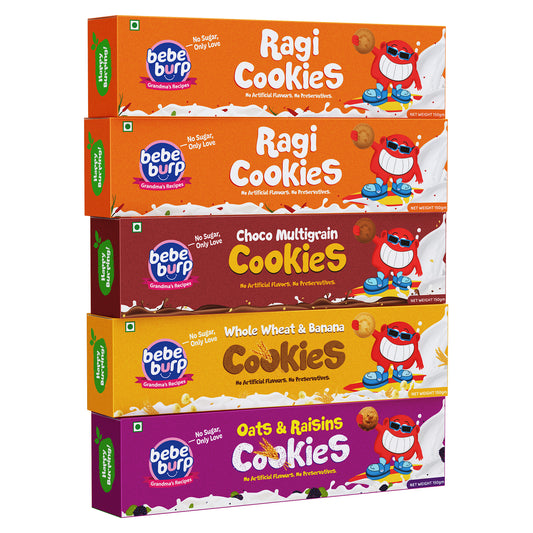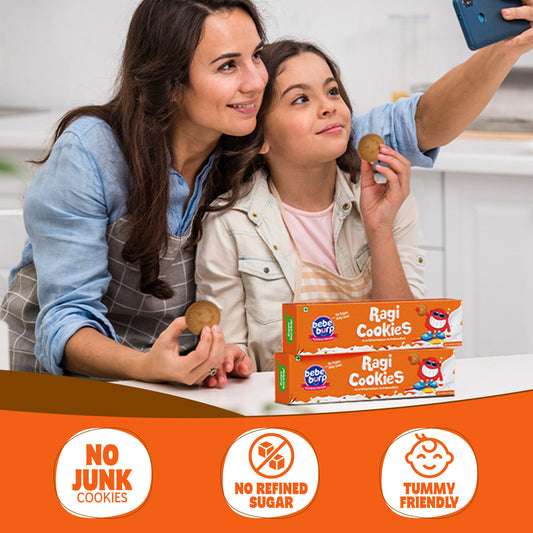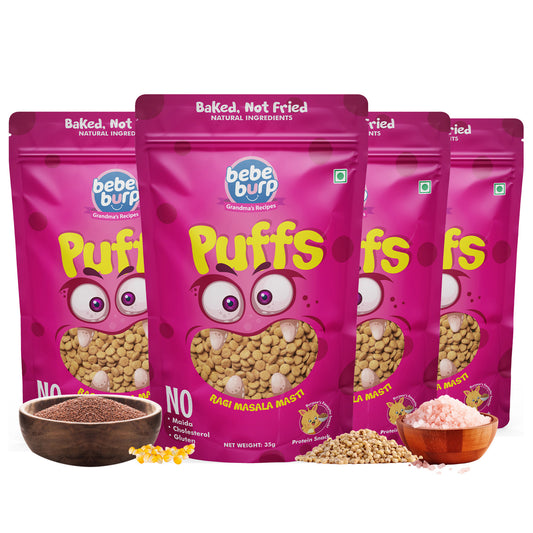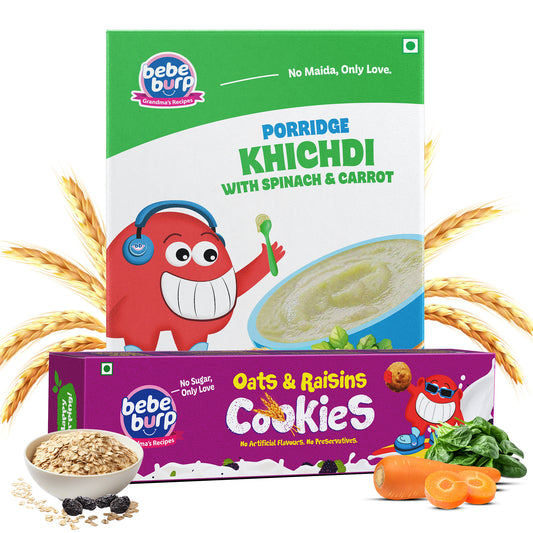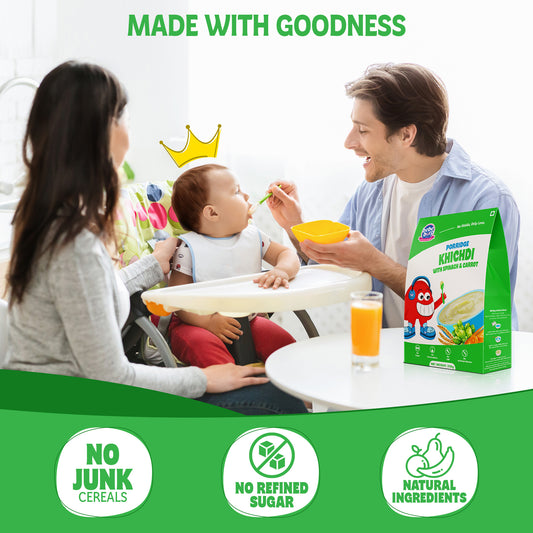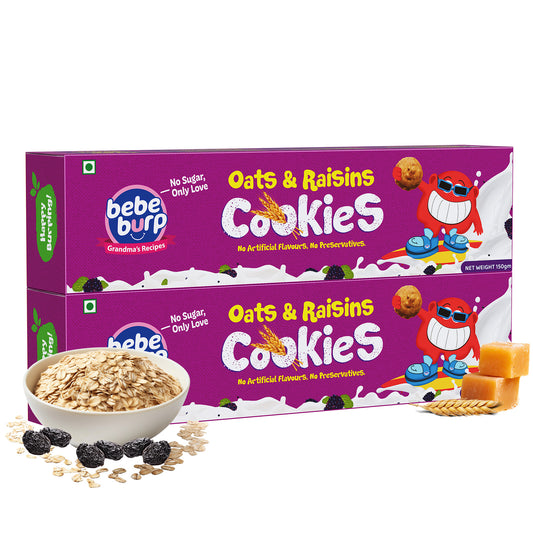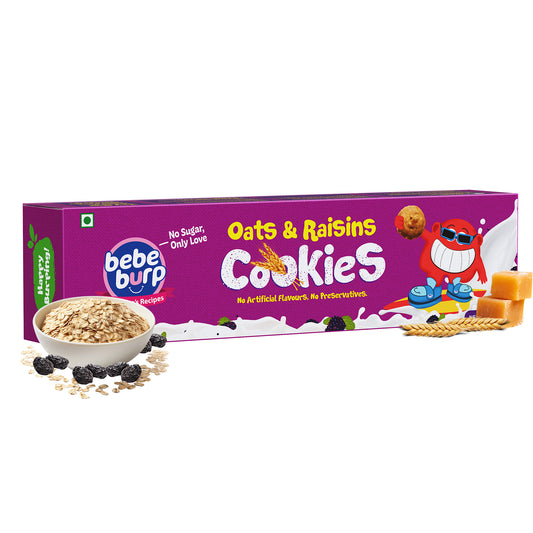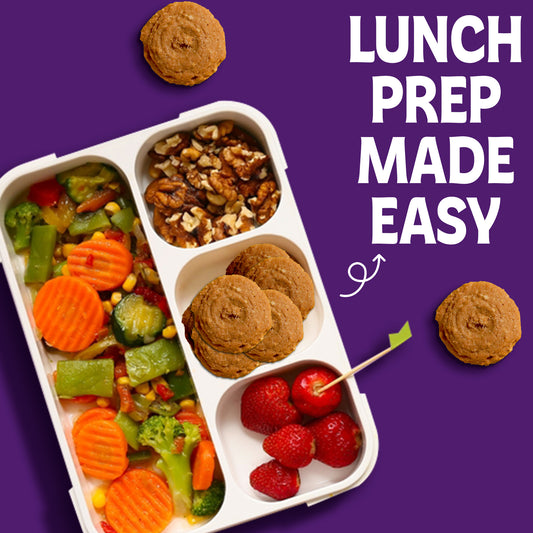The journey of parenthood is filled with countless milestones, and one of the most significant ones is introducing solid foods to your little one. As your baby grows, their nutritional needs change, and it becomes essential to complement breastfeeding or formula with wholesome, nutritious foods. This transition is not just about nourishment; it's also a crucial step in their development. When it comes to choosing the perfect first food for your baby, oats porridge stands out as an excellent option. Oats are a powerhouse of essential nutrients, making them an ideal choice for your baby's growing body and brain. Let’s delve deeper into this wholesome delight!
When to Introduce Oats Porridge
Alright, let's dive into the nitty-gritty of when and how to introduce oats porridge to your precious little one. Remember, every baby is unique, so it's essential to pay attention to their cues and needs. The general consensus among pediatric experts is around the 6-month mark. At this age, most babies are developmentally ready to explore the world of solid foods. As for the query, ‘How do I know if my baby is ready,” look for a few telltale signs. Is your little one showing an interest in what you're eating? Are they sitting up with minimal support? Can they move food from the front of their mouth to the back without pushing it out? If you're nodding along, it's a sign that your baby might be ready to join the oat porridge club. But, before you make any changes to your baby's diet, have a heart-to-heart with your pediatrician. They know your baby's health history and can offer personalized guidance. Plus, they'll help ensure that introducing oats porridge aligns with your baby's growth and development.
Preparing Oats Porridge for Babies - Oats Porridge Cooking Tips for Babies
Now that we've got the when and why sorted out, let's roll up those sleeves and talk about how to whip up some delicious oats porridge for babies. Let's start with the basics. For baby porridge, go for the good ol' rolled oats. They cook up nice and creamy, perfect for your baby's delicate taste buds. Now, how are you going to transform those oats into scrumptious porridge? You've got options, my friend. The classic stovetop method gives you complete control over the consistency and flavor. If time is of the essence, the microwave can be your best friend – quick and easy. And if you're an instant gratification kinda person, the Instant Pot is here to save the day. Take your pick, and let's get cooking!
Adjusting Consistency for Different Stages of Weaning
Babies grow fast, and their taste and texture preferences change just as quickly. So, how do you cater to their evolving palates? It's all about tweaking the porridge consistency. For the wee ones who are just starting, aim for a smoother, runnier porridge. As they grow, make it thicker and chunkier to challenge those developing chewing skills. Flexibility is the name of the game.
Adding Flavors and Variety to Oats Porridge
Boredom at mealtime is a no-no. Spice things up by adding a pinch of creativity. Think about adding some fruity goodness like mashed bananas or applesauce for a natural sweetness. A dash of cinnamon or a sprinkle of nutmeg can turn your oats into a flavor adventure. Remember, you're not just feeding their tummies; you're nurturing their taste buds too. Here are some more things to keep in mind when you introduce oats porridge to your baby.
- Begin Small and Build Up Slowly: Think of it like this: you're introducing your little one to a new friend, and you want them to hit it off. Start with tiny portions – we're talking teaspoons here – and see how your baby reacts. As they give the nod of approval, you can gradually increase the portion size. This slow and steady approach helps your baby adjust to the new flavor and texture without overwhelming them.
- A Smooth Texture is a Must for Early Stages of Weaning: For those early stages of weaning, your baby's palate might still be getting used to the idea of anything that isn't milk. So, aim for a super smooth porridge. You can use a blender or food processor to achieve that silky consistency. The goal is to make it as gentle on their taste buds and tummies as possible.
- Move to Thicker Consistency: As your baby becomes a pro at gobbling up oats porridge, it's time to level up the texture game. Gradually make the porridge thicker by using less liquid, and introducing those tiny oat lumps. It's all about helping your baby develop their chewing skills and adapt to different textures.
Now, let's talk about fostering some independence. Encourage your baby to feed themselves. Sure, it might get messy (okay, it WILL get messy), but it's a vital part of their development. Let them explore the joys of holding a spoon and making those adorable attempts at self-feeding. It's a beautiful mess!
Nutritional Benefits of Oats Porridge
Moving right along, let's talk about the superhero qualities of oats porridge – nutrition!
Oats are like a treasure chest of nutrients. They're packed with fiber, vitamins, and minerals that are essential for your baby's growth. Fiber is the unsung hero of digestion and oats' high fiber content can keep your baby's tummy happy and promote a healthy digestive system. Iron, on the other hand, is a game-changer when it comes to your baby's brain development. Oats also bring along other vitamins and minerals that are like little soldiers protecting your baby's health.
Oats Porridge and their Food BFFs - Nutritious Oatmeal Recipes for Babies
Combining oats porridge for babies with other complementary foods is a great way to provide a balanced and nutritious diet for your child. It's important to introduce a variety of foods to ensure they receive a wide range of nutrients. Here are some ideas for combining oats porridge for babies with other complementary foods for kids:
- Fruits:
- Add sliced bananas, berries, diced apples, or mashed ripe avocado to the oatmeal for natural sweetness and added nutrients.
- You can also top the baby oatmeal porridge with dried fruits like raisins or apricots for extra flavor and texture.
- Nut Butter:
- Incorporate a small spoonful of peanut butter, almond butter, or cashew butter into the oats for a protein and healthy fat boost.
- Yogurt:
- Mix in a dollop of plain or Greek yogurt for added creaminess and probiotics. This also provides a source of calcium and protein.
- Milk:
- Cook the oats in milk (cow's milk or a plant-based alternative like almond milk) for added calcium and creaminess.
- Seeds:
- Sprinkle chia seeds, flaxseeds, or hemp seeds on top of the oatmeal for added fiber and omega-3 fatty acids.
- Vegetables:
- Believe it or not, you can sneak in some veggies like finely grated carrots or sweet potatoes into the oats for added nutrients. Cook them with the oats for a softer texture.
- Cinnamon or Nutmeg:
- Adding a pinch of ground cinnamon or nutmeg not only enhances the flavor but also provides antioxidants.
- Honey or Maple Syrup (in moderation):
- A drizzle of honey or pure maple syrup can add natural sweetness to the oats. Just be cautious about using too much to avoid excessive sugar.
- Nuts:
- Chopped nuts like almonds, walnuts, or cashews can provide added crunch and healthy fats. Ensure they are finely chopped for young children to prevent choking hazards.
- Mashed Banana or Pumpkin:
- Incorporate mashed banana or pumpkin into the oats during cooking for a natural sweetener and added nutrients.
- Berries Compote:
- Make a simple berry compote by cooking fresh or frozen berries with a little water and sweetener. Serve this on top of the baby oatmeal porridge.
Allergies and Special Dietary Needs
So, you're thinking about introducing oats into your baby's diet. Fantastic choice! Oats are nutritious and versatile. But before you dive in, here's what you need to know. When you first introduce oats, do it in isolation. What does that mean? Well, hold off on introducing other new foods at the same time. This way, if your baby has a reaction, you can pinpoint the culprit. Start with a small amount and watch closely for any signs of allergies or sensitivities.
Now, let's talk about the big "A" word: allergies. Food allergies can be a concern, and it's crucial to be vigilant. Here's what you need to look out for:
- Skin Rash: Keep an eye out for hives or a rash around your baby's mouth or elsewhere on their body.
- Digestive Issues: Watch for symptoms like diarrhea, vomiting, or tummy discomfort.
- Breathing Difficulties: If your baby starts wheezing or having trouble breathing, it's a red flag.
- Behavioral Changes: Sometimes, allergies can make your little one irritable or fussy.
If you notice any of these symptoms after introducing oats or any other new food, it's time to consult your pediatrician. They can help you determine if it's an allergy or just a sensitivity and guide you on the best course of action.
Adjusting Oats Porridge for Babies with Special Dietary Needs
Now, let's chat about catering to special dietary needs. Every baby is unique, and some may require adjustments to homemade oats porridge for infants. Here's what you can do:
- For Gluten Sensitivity: If your baby has gluten sensitivity or celiac disease, opt for certified gluten-free oats. These oats are processed in a way that reduces cross-contamination with gluten-containing grains.
- For Lactose Intolerance: You can use lactose-free milk or a dairy-free alternative when preparing oats porridge if your baby is lactose intolerant.
- For Special Dietary Restrictions: If your baby has specific dietary restrictions, like a vegan or vegetarian diet, you can adapt oats porridge for babies by using plant-based milk and exploring creative plant-based toppings and flavorings.
Remember, your baby's health is the top priority. Always consult with a healthcare professional or a pediatric dietitian if your little one has specific dietary needs or restrictions. They can provide tailored guidance to ensure your baby gets the nutrition they need while accommodating any dietary concerns.
Mealtime should be a joyous experience for both you and your baby, and with a little attention to their unique needs, it can be just that!
Safety Tips and Precautions
Alright, folks, let's talk about safety because, when it comes to your baby, safety always comes first. Here are some essential tips to keep mealtime secure and enjoyable.
- Proper Storage and Reheating of Oats Porridge
We get it; life can get busy. So, what do you do when you have leftover homemade oats porridge for infants? It's essential to store it properly. Here's the scoop:
- Refrigeration: If you have leftovers, cool them down quickly and pop them into the fridge within two hours. Keep them in an airtight container to maintain freshness.
- Reheating: When it's time to reheat, make sure it's piping hot throughout. Give it a good stir to even out the temperature, and always test a little on the inside of your wrist to ensure it's not too hot for your baby.
- Age-Appropriate Serving Temperature
Nobody wants to burn those precious little taste buds! Check the temperature of your oats porridge before serving it to your baby. Aim for lukewarm. A good rule of thumb is to put a small amount on your inner wrist – if it feels comfortable to you, it should be safe for your baby.
- Avoiding Common Choking Hazards
Ah, those adventurous little eaters! Babies love to explore textures and tastes, but sometimes they can be a bit too enthusiastic. Here's how to minimize choking hazards:
- Size Matters: Cut or mash foods into small, manageable pieces for your baby's age and stage. Think bite-sized.
- Watch Those Textures: Be cautious with foods that are hard or crunchy. These can be tricky for little ones to handle.
- Supervision is Key: Always keep an eye on your baby while they eat. It's a great bonding time anyway!
Hygiene Practices While Preparing and Serving Oats Porridge
Let's talk about hygiene because a clean kitchen equals a happy tummy. Here's what you need to know:
- Wash, Wash, Wash: Wash your hands thoroughly before preparing your baby's meals. And make sure all utensils, bowls, and feeding equipment are squeaky clean.
- Use Safe Water: Ensure that the water you use for cooking and preparing baby food is safe and clean. If you're using tap water, make sure it's suitable for babies.
- Fresh Ingredients: Always use fresh and high-quality ingredients when preparing oats porridge for babies.
FAQs:
- Is oats porridge safe for my baby, and when can I start giving it to them?
Absolutely, oats porridge can be a fantastic choice for your baby's first solid food. It's usually introduced around the 6-month mark, but always consult with your pediatrician first.
- What if my baby has allergies? Can they still have oats porridge?
If your baby has known allergies, consult with your pediatrician before introducing oats. Be vigilant for any signs of allergic reactions when you start.
- Can I make oats porridge in advance?
Yes, you can prepare oats porridge in advance and store it in the fridge. Just be sure to follow proper storage and reheating guidelines.
- What if my baby doesn't like oats porridge?
Don't worry if your baby isn't an instant fan. It might take a few tries for them to develop a taste for it. You can also try different flavor variations to make it more appealing.
Whew, what a journey! In a nutshell, oats porridge is a nutritional powerhouse. It's packed with essential nutrients that support your baby's growth and development. Plus, it's versatile and delicious! We want to inspire you to get creative in the kitchen. There are countless ways to spice up oats porridge with fruits, spices, and other nutritious additions. Keep experimenting, and you'll discover what your baby loves most. Remember to keep safety a priority, follow your baby's cues, and enjoy the bonding moments during mealtime. Your baby's journey into the world of solid foods is an exciting adventure filled with milestones. With oats porridge as one of their first culinary experiences, you're setting them on the path to a lifetime of healthy eating. So, savor these moments, and here's to happy, healthy babies and delicious meals ahead!


